Marketing Gold: Mission, Vision, and More with Matthew Hirsch
By Tom Miller


Matthew Hirsch helps cleantech companies improve business performance using strategic communication that’s informed by experience and expertise. Before founding Hirsch Media in 2013, he covered business, technology, policy, and law during a 10-year journalism career, with articles for Bloomberg News, GigaOM, the solar magazine Photon, and other publications.
Editor’s note: This is the first article in our new series on marketing – Tackling the Big ‘M’. Among the topics Matthew and I cover in this conversation are:
- mission and vision statements
- brand consistency
- employee retention
- the importance of a documented marketing strategy
- tips for increasing referrals
- social media
- the Oakland A’s
- and more
This conversation has been edited for clarity and length.
Tom: (Tom Miller – Creative Director, BayWa r.e. Solar Systems; Editor – Solar r.e.view): I want to start with the basics. A lot of small contractors might not be familiar with marketing—its function and its terms. So let’s start with a basic question: what is marketing?
Matt: Good question. Marketing is really expansive. It’s really any way in which you, as a company, or even as a professional, communicate with people in your industry or your line of business. So a lot of people think of marketing as something very specific— maybe they think of digital marketing. Maybe they think of marketing content. But when you go to a trade show—like if you went to InterSolar recently—pretty much every interaction you have is a form of marketing, whether you’re thinking about it strategically or not. Likewise, just printing up a business card is a form of marketing. Again, whether you think about it strategically or not.
Tom: So let’s talk a little bit about you. What is Hirsch media? Who are your clients? And what are some of the activities you undertake as a marketer?
Matt: Great. Thanks for asking. Hirsch media is the company that I started about four years ago. Before that, I had about a decade of experience in the publishing industry and about four years of experience as an editor of a solar magazine. And I saw a real need for companies to create content. So my company started as a very small operation, where I did some writing for solar companies, and now it’s grown into a virtual agency. I have partners who help me provide strategy, content, and promotion for solar companies, storage companies, and industry associations—also in the electric power business.
Some clients your readers might be familiar with are Enphase Energy—they were actually my first client. PVComplete is another—a startup who is producing solar design software. Greensmith Energy is an energy storage solution provider for all segments of the storage market. Residential, commercial, and utility scale. So those are a few.
Tom: I don’t know if you’re familiar but BayWa r.e. Solar Systems used to be called Focused Energy, and our initial partner was Enphase. So there’s a parallel there in our organizations!
Matt: Yeah! Solar is a small world. I interacted with Boaz [Soifer] a few times when I was an editor at Photon Magazine from 2009 to 2012. I’ve been in the industry since 2009. Sometimes it feels like it has gone by in the blink of an eye, and sometimes I feel like a grizzled old industry veteran!
Tom: What do most small to midsize solar contractors do wrong when it comes to marketing? And I realize I’m starting with the negative here [laughs]!
Matt: No, no. It’s a fair question. I ask myself that all the time on my own behalf. And I can give you a laundry list of things. I go through that same process with my customers. What are they doing wrong?
There’s one theme that I want to have come out really clear as we tackle these questions and that is: you always need to get buy-in from company leaders.
Marketers really like to market themselves with opportunities that anyone can take advantage of.
These are the kind of catch-all solutions that cast a wide net around their customer’s goals. And I understand why that’s useful for service providers like myself, but it’s often dangerous to prescribe solutions before you diagnose the problem.
I think marketers are a lot like doctors in a way, although that might seem a little self-aggrandizing [laughs]. But I make the comparison because we need to first understand a company’s pain points. We need to know where they are before we offer solutions. And we need to be sure that the company leaders agree with the diagnosis, or else they’re not going to swallow the medicine we prescribe.
Tom: Do you see yourself as a certain kind of marketer, with a certain skill set? And if so, what is your skill set? What kind of marketer are you, if that’s the right question?
Matt: Yeah, that’s a great question, and it’s one that comes up many times as you’re going through the process of deciding with the company whether you, as the marketing service provider, are a good fit.
A lot of times you hear the words “marketing agency” and you can’t see what’s on the other side. And so I like to give people a very clear sense of the structure of my organization right from the start. Content marketing is a real strength for my organization. And I have very strong relationships with people in business development and sales, and folks who are really good with PR, promotions, and social media. And those are services that I offer. Flexibility is really important. But content is central to what I do.
Tom: In our pre-interview back-and-forth, you mentioned that marketers often try to silo marketing activities to spare time within the company. But you think that actually might not be the best approach. It seems like you want to break down those silos. Tell me what that looks like and what you’re hoping to achieve?
Matt: It’s a really important topic. Breaking down silos means: making the case, and getting people to understand, that a marketing specialist—or a group of marketing specialists—can’t be totally effective at achieving the goals of an organization without buy-in and participation from company leaders and staff.
I’ll give you some concrete examples: when a company tells its in-house marketers, or its third-party agency, “We want press releases written. We want some blog post written. We want website landing pages. And we want these business results…and you do it on your own!”
A lot of times marketers don’t have the level of insight that the company’s leaders have, or that the sales team has, or the product engineers—if it’s a product. Or, for example, the installers.
Installers have all sorts of conversations when they’re up on the roof and when they’re working with a new product for the first time. And the observations they make are gold! Those are really the most valuable pieces of information that a company can share. So the challenge for marketers is to come up with a process, an efficient process, to acquire that gold—those insights from experience from the people on the front lines of the organization.
Tom: If I’m a solar contractor, what am I pushing you, as a marketer, to do? Do you want to have the agency talk to the whole company? What approach should the solar contractor take when evaluating PR firms? How should they push them to engage?
Matt: I think it boils down to communication: internal communication with the staff and your marketing service provider. And then incentivizing people within the organization to take actions that further their marketing goals.
I think it’s important for company leaders to set an expectation—and communicate with the staff—that something under the big umbrella of “marketing” is an important goal for the company.
Tom: Give me some marketing goals.
Matt: Recruiting and retaining talent. Brand consistency. Increasing referrals. Those three are really good examples of bottom line business objectives. These are objectives company leaders can communicate across the board. “This is a goal. This is something we really want to move the needle on.”
Tom: I want to come back to increasing referrals at the end. But first, what is the low-hanging fruit for small to medium contractors when it comes to marketing? What should everybody be thinking about, and what should everybody be doing?
Matt: Yeah, that’s a good question. Like I said before, we need to start by diagnosing the pain points before we prescribe solutions.
But I’ll give a few high-level ideas that you really can’t ignore:
- First, it’s a bad idea for any small to medium solar contractor to not have a marketing strategy.
- It’s very common for people to say, “We know what we want to accomplish with marketing.” But then I say, “Okay, where is your documented strategy, which everyone in your organization can see?” And they say, “Oh, we don’t have that.” So documenting a strategy is really important.
- Using free and low-cost software. You might be familiar with the big platforms like HubSpot or Salesforce. Costs with those platforms can add up quickly. But there are a lot of free and low-cost options for marketing software out there. Start with the free. Or start with low cost if you can.
- Creating content is another one. That’s a very broad area, but a lot of companies are not even producing one blog post per quarter. Or once a month.
- Another point to try to get across to folks is: you really don’t need a big marketing budget to do these things. But you want to create and promote content somehow.
- And, of course, it doesn’t make any sense to create content if you’re not taking steps to promote it and make sure it’s reaching your desired audience.
- Lastly, you want to track and analyze results.
Tom: Why is it important to write that blog post?
Matt: It’s important to write a blog post so you can tell your audience that something new is happening in your company.
For example: when I’m getting a thumbnail sketch of a company I’ve never heard of before, I’ll first go to their website. And I’ll look for a recent blog post—just to see what’s fresh within their organization. What’s something that they’re doing now? And if they don’t have that, it raises a flag for me.
And it raises a question that I need answered about how active they are in their market and how successful they are.
If nothing else, it lets people know that they’re engaged. With the market… With their customers… It doesn’t have to be something brilliant, but it has to send a message—to readers, customers, investors—that things are happening within the organization.
Tom: So let’s say that I’m a small or medium contractor and I haven’t written any blog posts before. And I feel like it’s a big burden on my time to do that. Or maybe I don’t know what to say. What are some easy first steps that you would recommend people to take in terms of generating their own content?
Matt: The easiest thing to do—and I’ll try not to be too self-promotional here—you can take a free, thirty-minute consultation with me and talk about it [laughs]. And at the end of the thirty minutes, I can customize some ideas that are particular to your organization.
But in terms of content: if you were at InterSolar or SPI, what were your observations?
And now that I’m thinking about it—and I run into this with a lot of people—a lot of people feel like the things they do today are proprietary.
So a lot of times there’s a tug-of-war between marketers and their clients to free up information. But you’re not giving up any trade secrets if you say that you’re exploring a new mounting system! Or you’re exploring a new inverter, or you’re exploring a new module, or software. There’s no secrets out there about what products are available.
It’s really worthwhile for solar contractors to open up about their processes—to talk about their products and services.
Another idea: you can always put up a customer success story. And they don’t even have to be particularly new. If you installed the system a year ago, and you took some photos, you can show that the system has had no downtime and that the customers are happy.
Tom: I think the suggestion for collecting referrals as you go is a really important one—having a process to collect the referrals right at the end of the install. Or having the sales person collect it as a follow up. That’s a big one. Get a photo, get a quote from the customer. That can really add up. And at the end of the year you’ll have a big pile to refer to!
Matt: Yes! Often, when I start with a new client, I’ll find out what assets they have. Photos, Excel files, handwritten notes about which customers were happy with their work. All those things are clues for marketers. Sometimes we have to do a bit of investigation to get to the content we need. And it’s always such a relief when my customers say, “Yeah, we’ve got a few pictures. We have some names of people you can talk to.” Those are gold for marketers!
You can create a process that people in the company will find painless to follow. If you don’t have that process, everything feel like pushing a boulder up a hill. And everyone will wonder, is this really worth all the effort?
Tom: You mentioned photos as an asset. What are some of the other assets that you’re looking for?
Matt: Well, the big one is a documented strategy.
It’s certainly an asset if they have a strategy already written down. But even if they’ve discussed it internally, then we’ll have some ideas to put down.
Like I said, sometimes that process is very much like doing an investigation. If you have not documented a strategy, the marketer is going to have to pull together a lot of clues.
And I should say: a lot of people have frustration with the idea that you actually need a document strategy. And I totally get it. It’s like when you sit down at a blank screen and think, “Oh, God, what am I gonna write?” But then you type a few ideas, and that becomes an outline, and then you have somewhere to start working from.
But sometimes documenting a strategy can feel like that: like, where do I even begin?
Mission & Vision
Tom: Let’s sketch out a strategy for a small to medium contractor with an old website, with not much social media presence, and no idea how to start a marketing effort. What are the key things that you’re going to be talking to them about?
Matt: There are a few ways that I would approach the conversation. I’ve had a few, very successful workshops with clients over the last few years. Some have been startups, and one had a marketing team of a dozen people—who had never all been in the room together!
So we start by talking about creating mission and vision statements.
We create some documents where they describe, in ten or twenty words, what they do at a company level and what they do in different parts of the organization.
For example, if a contractor has a rooftop or storage offering—or maybe they do retrofits—you want to bore down to exactly what they’re offering in a clear and concise way. And in a way that positions them relative to the competition. And also gets across their value proposition. So I start there.
I might show how companies outside the solar industry have addressed this challenge. The Lego company did a really good job of showing what their mission is and what their vision is. So I work with people to understand those really abstract concepts.
And whether you have three people in your organization or twenty, you’re going to be interacting with a lot of people throughout the course of your workweek. And you want to be consistent about why they should work with you as opposed to your competition.
Tom: I think the mission and vision conversations are very important ones to have. A lot of companies don’t do that. And it’s not just a resource for external use, but it can be a very valuable exercise for internal use—for internal marketing—and for collaboration and communication within the company. Do you have any thoughts on that? The internal versus external marketing component?
Matt: I think that’s right. I’m an advocate for a lot of these processes I’m describing. But I also really try and put myself in the shoes of the contractor who says, “I don’t have time for this! I don’t have money for this!”
You can feel a weight on your shoulders when you’re embarking on this process. But once you commit to it, you very quickly find that it wasn’t nearly as difficult, or expensive, or time-consuming, as you thought.
I’ll mention onboarding: especially with large organizations, or organizations that work with a virtual team, or organizations that see a lot of turnover—as contractors often do—it can be intimidating to onboard somebody new into your organization if you don’t have these assets. But if you do have them, and can use a document to guide a focused session about who you are and what you do as a company, you can bring that in the recruitment and retention process—and then it becomes part of your hiring rap.
And it establishes a sense of consistency—inside the company and out—that you can’t possibly have without it.
Tom: And I think the internal component, in terms of employee retention, is a really important piece. Especially in the solar industry—where it’s very expensive to hire and train people—keeping valuable employees is an important factor. So the question of, why should somebody work for your company?—that’s an important question to have an answer to. Then people have a sense of the mission and the importance of the work they do, or will be doing. And marketing can really play a role in that, internally.
Matt: I think that’s right. Another comment I would make is: when you bring somebody new into the organization, they’re going to go out into the world and tell their family, their friends, and people at the grocery store [about their new job]. And people might ask them, “Oh, what do you do?” Right there is an opportunity for them to very concisely define your organization to somebody new.
But if all they tell people is, “Oh yeah, we install rooftop solar,” then the person at the other end of that conversation will view you as an undifferentiated service provider! And you’ve missed an opportunity to say, “We are the largest installer in the Bay Area.” Or, “We are the largest provider of a certain technology.”
You can nail down what differentiates you—because something differentiates everybody. And if you don’t highlight what differentiates you, anyone who hears about you will just view your organization as an undifferentiated service provider.
Tom: What is the end-user’s perception of the solar industry? Positive? Negative? What does the solar industry need to get better at, if anything? And what are we really good at?
Matt: It’s such an interesting question. Lately, I’m thinking so much about my clients’ specific needs that it’s nice to get the opportunity to step back and think about the industry as a whole.
The constant theme that I’ve been dealing with since 2009, when I started in the industry, is that change comes so quickly. And the average homeowner, who is not working in the solar industry, is always inundated with outdated facts about the industry. Whether it’s pricing, or financing, or products. There’s always this really big lag in the industry.
And there are really good publishing companies that cover the industry, but a lot of them are speaking to solar professionals. It’s been challenging for the publishing industry to create a brand that can communicate about solar to end-customers. I’m a fan of Home Power Magazine. I think they’re one of the publishers who really try and reach an audience of end-customers.
Yeah, so how do you get information about current solar to the people who really want to know? Nobody’s come close. And we haven’t crossed the threshold of really helping people evaluate an installation based on the value of solar—or even capital expenditures. What is an appropriate amount of money to spend on a dollar-per-watt basis, if you’re directly owning the system?
Tom: What do end-users really respond to about solar? How can you find that out?
Matt: Well, one approach—if you’re doing any type of keyword planning for your digital marketing—you can look for what people are searching for in online search.
What are the terms they’re using to look for the things they want? Also, social media monitoring. Again, you can monitor how many people are talking about a certain topic and what sentiments they’re expressing about a certain topic. That’s a really good way to quickly and efficiently get measurable answers to those questions.
Tom: And what tools are you using to measure social media keywords and interactions?
Matt: Google has Keyword Planner. If you can justify the expense, organizations like Moz and BuzzSumo. BuzzSumo is good because you can get a limited number of searches per day for free. So you can just plug in a few search terms per day, or drop in once a week. Or, if you have a service provider that has an account, they can do a much more comprehensive analysis.
Companies who are responding well to customer interest are paying close attention to the homeowner’s desire to monitor and manage their consumption—to do energy storage in a way that makes sense for them, whether it provides a real return on investment for the homeowner or not. There is also a large interest in smart home technology.
But these are challenging areas for companies to navigate right now because you want to be careful where you put your resources.
Storage is a space that I’m watching very closely. I’m asking: if a company invests in storage, are they getting the results that they expected? This is a cliché, but storage really feels like solar did when I first started in the industry. It’s a really interesting time to see how companies manage this transition. And you don’t want to wait too long to address the need and fall behind your competition. But you also don’t want to over-invest when there’s not enough business to justify it.
Tom: Who is doing marketing really well? Who do you look for for inspiration? For ideas?
Matt: What I try to do is look at other verticals and other industries that are on the bleeding-edge of content marketing, digital marketing, and search.
I make observations from leaders in email marketing and content marketing, and agencies that are serving some of the biggest brands in the world. And I try and bring those insights to solar companies as small as a mom-and-pop installer.
That’s been the process that I follow. Building those insights so they translate to even the smallest solar company.
Tom: I want to push you a little bit to give me an example of a company that’s doing these things really well.
Matt: I think we all run in different circles, depending on our interests. But the first one that comes to mind…
Well, there tends not to be a lot of overlap in solar/cleantech and sports fans, but I’m one of those people who is passionate about solar marketing and sports [laughs]! So if you’re out there, and you share these interests, let’s talk [laughs]!
So the first thing that comes to mind is my hometown baseball team, the Oakland A’s. They’re going through a really big organizational transition right now. And it’s been fascinating for me to follow it in media reports, to see the marketing they do at the stadium, on their website…
Whether you were a fan of the team or not—if you’re at all aware of the existence of [the A’s] you probably have a pretty good inkling that they didn’t want to be in Oakland! They’ve been pursuing a stadium in San Jose…
But they had a big change in leadership and started a campaign just before the current baseball season called Rooted in Oakland. They created this big marketing campaign and backed it up with a lot of messaging during the in-game experience.
 Illustration – Oakland Athletics
Illustration – Oakland Athletics
Tom: That they’re now dedicated to Oakland?
Matt: Yeah! And now, if you interface with them at all—and you have to try not to, because they really made a lot of progress in connecting with folks through so many different channels: social, direct mail— they’ve totally changed the perception.
I follow some really skeptical bloggers—who are not cheerleaders for the team at all—but it didn’t take long for the new leadership to get them to recognize that things have changed, and they’re committed to Oakland!
And words are often not that powerful—you really have to back them up with actions. Anyway, my anecdote is probably not going to land that well with a lot of your readers, but that’s the first thing that came to my mind [laughs].
Tom: So then I have to ask: the movie “Moneyball”, is it overrated or underrated?
Matt: Oh, God! Well, the book’s better than the movie. The movie is worth my while!
I guess it’s cliché now to say that the Moneyball era is over, and those ideas have totally transformed the sport and the business. Anyway, good movie. Even better book.
Tom: So let’s chat quickly about social media. As I said in my notes, I’m not convinced that the conversion rates are there for the effort. I also don’t like paying for reach on Facebook. And I think, in general, social underrates the thoughtful conversation in favor of the quick and shareable. So what are your thoughts on social media?
Matt: I’m glad we’re making some time for this. A lot of people don’t even want to have the conversation! And I’ve gone through a few different evolutions of how I address social media. But it always brings me back to the start of our conversation: that you really need to diagnose the problem before you prescribe a solution. If people don’t believe that social media can solve their problem, they’re not going to invest any time in it.
Tom: So where does social media function at its highest level?
Matt: When companies are really focused on something they can achieve through a social media campaign—those are the examples where it’s most effective.
You can message before a tradeshow around something you want to engage your customers with. You can create buzz around a new product. You can engage them around a contest. Or incentivize them to come drop by your booth and talk to you at the show.
What I see when I go to tradeshows is a really un-level playing field, between companies that are able to really drive traffic to their booth—and have productive conversations with visitors—and companies that can’t, or don’t.
But you can’t just snap your fingers and make it happen. The process has to be really well defined to get people to come do your booth.
But think: you’re already spending the money to get the booth, you might as well make the most of it.
Tom: So let’s end with a big one: any tips on increasing referrals?
Matt: Well, what I’m going to say is probably not new to anybody, but executing on it is important.
- You can’t get referrals if you don’t provide outstanding service. So if you’re not already providing outstanding service, work on that first!
- And then, you can’t get referrals if people don’t know about your outstanding service.
Content marketers often talk about Discovery, Consideration, Conversion, and Retention.
If you’re trying to get prospective customers to discover you—that’s your website, your blog, your social media page. Or maybe webinars, newsletters, case studies. Those are tools companies use to promote discovery.
Product and service descriptions—those are types of tools you can use to get someone to consider doing business with you.
Now I’ll skip ahead to retention. Retention is really where you’re providing customer support. So if you have a website, you should have a support page for customers in the process of getting an install. And a support page for customers who already had an install in case they want to get in touch with you about something. Anywhere you can demonstrate your outstanding service should be a landing page on your website—and a menu item. Those are my thoughts.
Tom: Okay! Thanks for all this information. It’s been a pleasure talking with you.
Matt: No problem! Thanks for the opportunity.


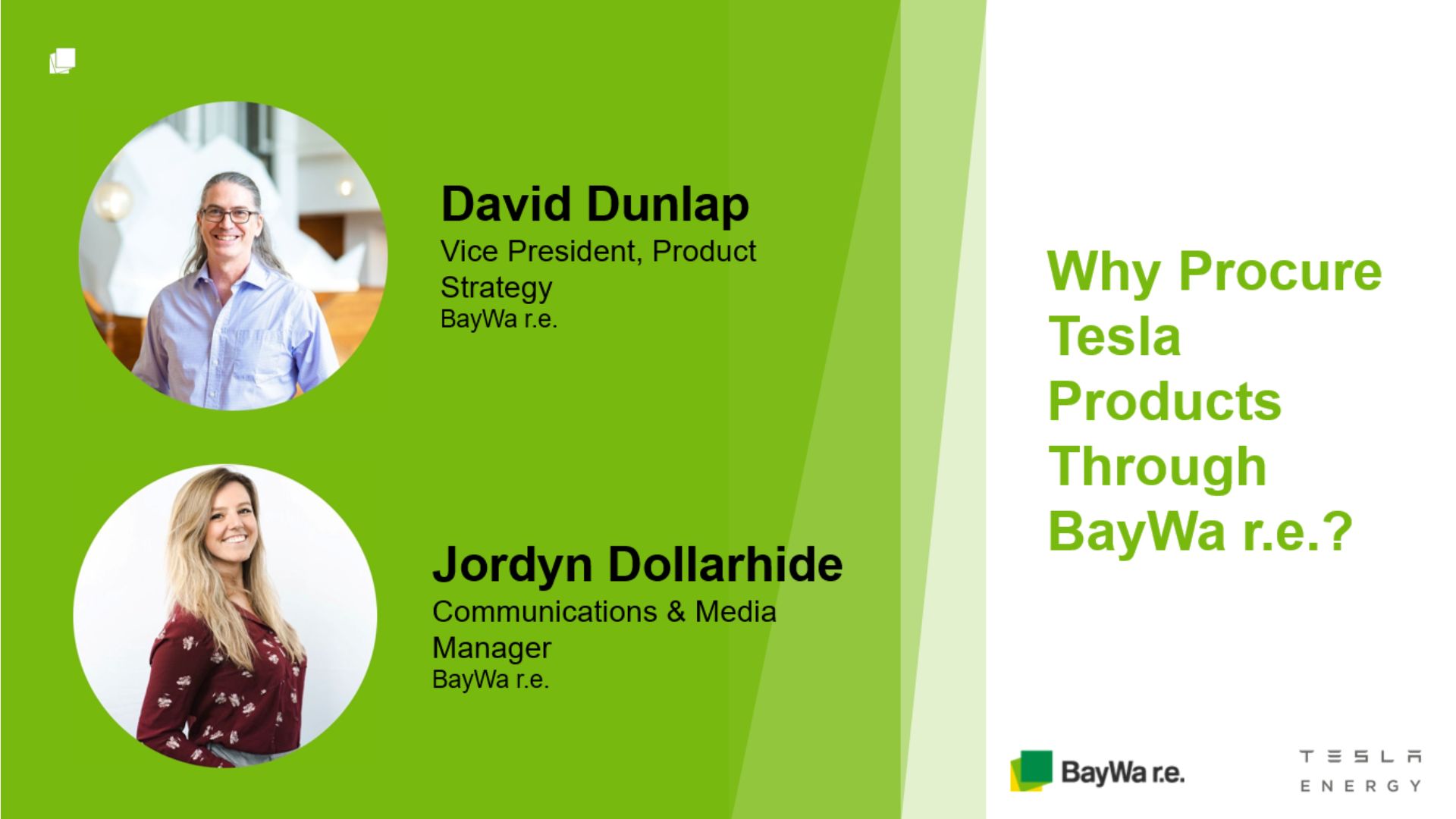
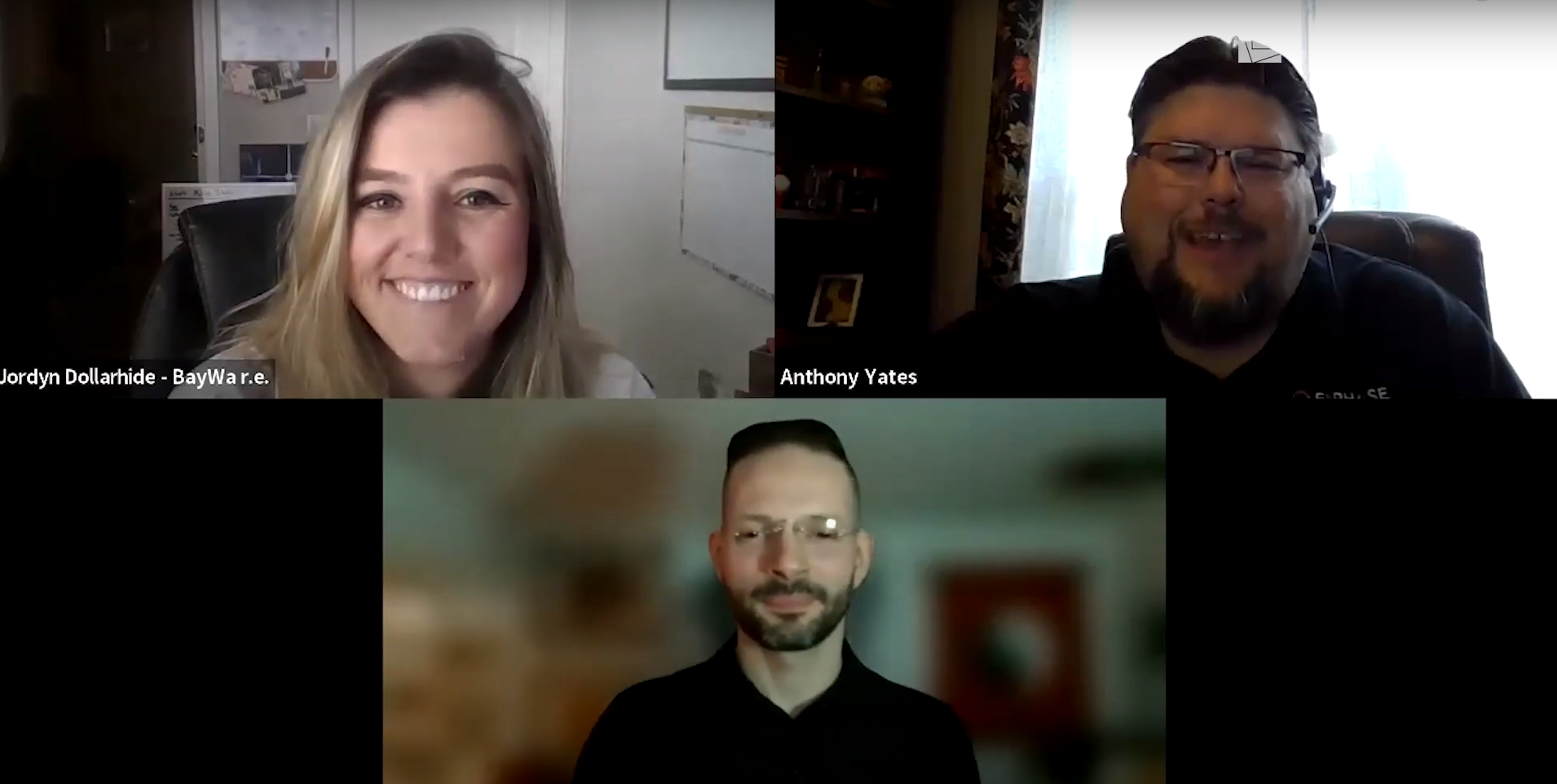
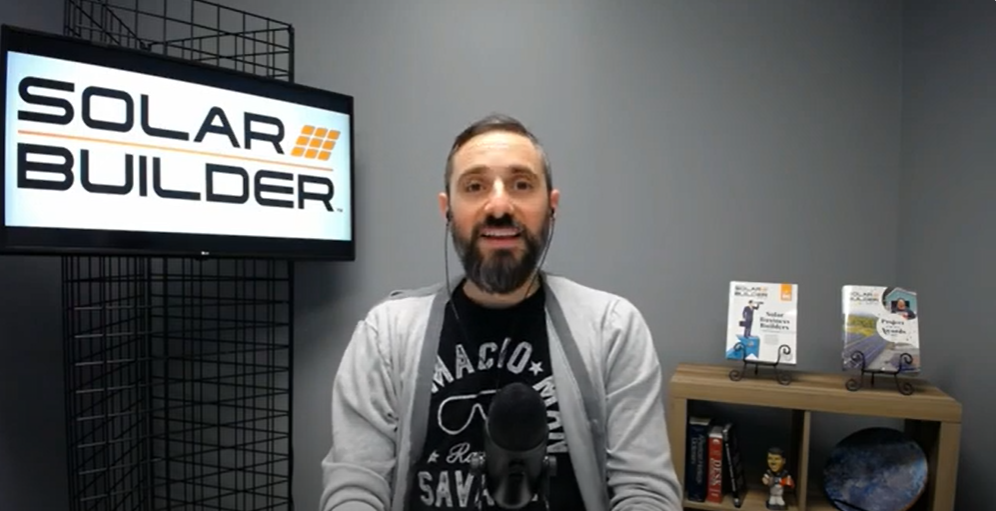
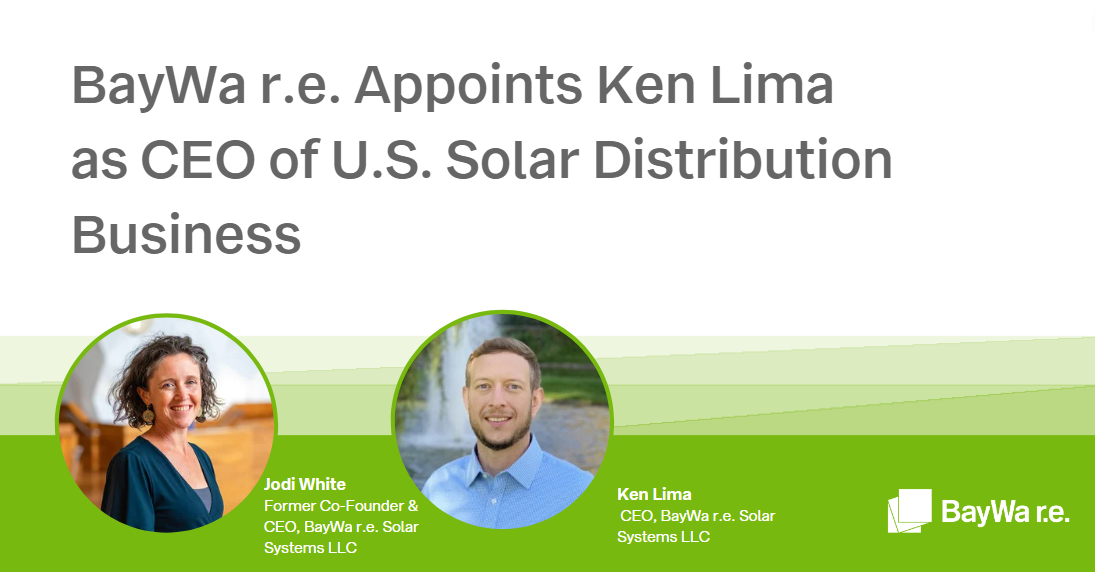
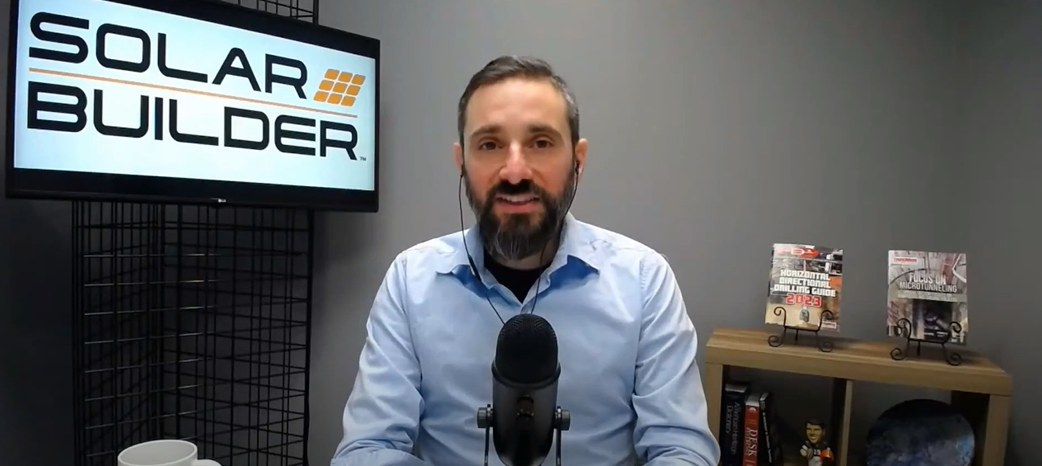
BayWa r.e. partners with software company PVComplete and chats about ‘5 Free Projects a Month’ and ‘Click to Quote’ features.